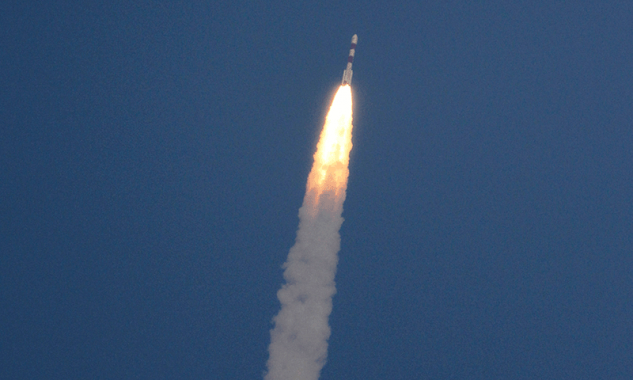
NEW DELHI: India’s Mars Orbiter Mission on Wednesday successfully entered orbit around the Red Planet on its first attempt, Prime Minister Narendra Modi announced.
“India has successfully reached Mars. Congratulations to all, to the entire country… history has been created today,” Modi said from the Indian Space Research Organisation’s mission control in south India from where the mission was televised live nationwide.
The success of the mission— named Mangalyaan (Mars-craft) — after its 10-month journey was touted by Modi as a showcase for the country’s home-grown and low-cost space technology.
“I have said it in the past too, the amount our scientists have spent on this mission is even less than what they spend in making Hollywood movies,” he said in his televised addressed to the mission scientists.
At just $74 million, the mission is less than the estimated $100 million budget of the sci-fi blockbuster Gravity.
Read more: India hails rocket ‘cheaper than Hollywood film Gravity’
India’s successful mission to the Red Planet sees it join an elite club that includes United States, Russia and Europe.
The mission plans to study the planet’s surface and scan its atmosphere for methane, which could provide evidence of some sort of life form.
The probe is expected to circle Mars for six months, about 500 kilometres (310 miles) from its surface. Its scientific instruments will collect data and send it back to Earth.
“We have prevailed, not everyone gets success in their missions… we got it in our very first attempt. ISRO (Indian Space Research Organisation) put out this spacecraft in a record time of only three years, every Indian is proud of you,” Modi said.
Experts say the mission’s main aim is to showcase India’s budget space technology and hopefully snatch a bigger share of the $300-billion global space market.
The mission’s cost is just a fraction of NASA’s MAVEN spacecraft which successfully began orbiting the fourth planet from the sun on Sunday.
India has so far launched 40 satellites for foreign nations, since kickstarting its space programme five decades ago. But China launches bigger satellites.
Critics of the programme say a country that struggles to feed its people adequately and where roughly half have no toilets should not be splurging on space travel.
Mars missions: Successes and failures
Getting a spacecraft to orbit Mars is a complex mission that few countries have attempted, and even fewer have achieved.
The former Soviet Union made the world’s first attempt in 1960, but the satellite didn’t get far from Earth.
The United States had the first successful mission four years later, when a flyby satellite, Mariner 4, beamed 21 images of the red planet’s surface back to Earth.
Since then, more than half of the 41 attempts have failed for myriad reasons including rocket malfunction, radio failure, fuel troubles and missed landings.
Here is a breakdown of successful and failed attempts:
US: 15 successful attempts, 4 failures
USSR: 2 successful attempts, 14 failures
Russia: 2 failures
European Space Agency: 1 success
Japan: 1 failure
India: 1 success
(Source: NASA)






Pakistan also has this capability.
pakistan require brain to do this